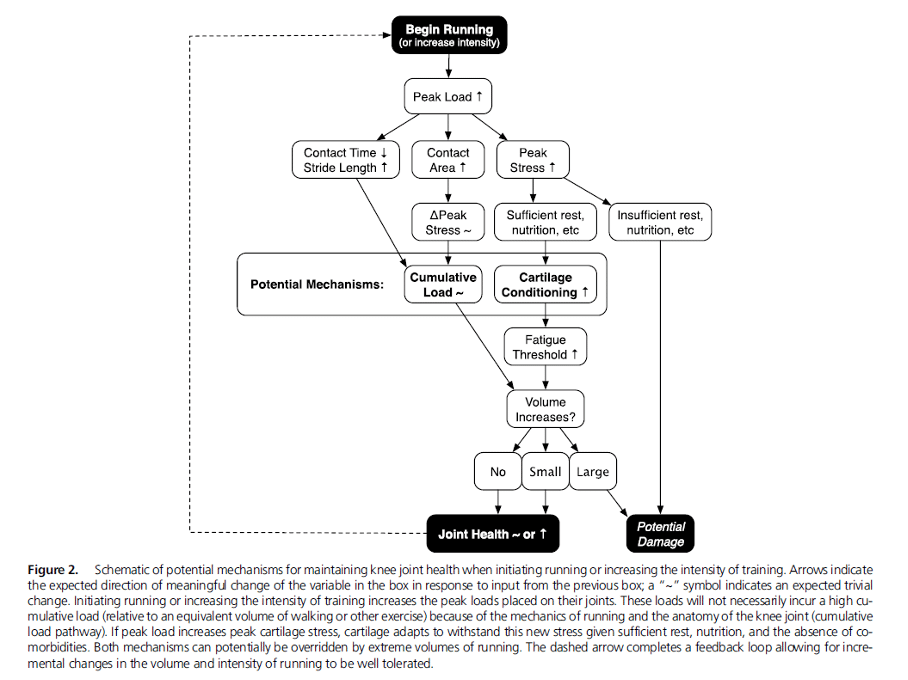Is jogging a risk factor for osteoarthritis in the knees or hips? And what do beginners need to bear in mind to protect their joints? We give recommendations on what is important when running in order to maintain healthy cartilage and joints. We also clarify whether running is also beneficial for people with osteoarthritis.
Do you have osteoarthritis of the knee or hip and are wondering whether jogging promotes osteoarthritis? Or are you afraid that running favours osteoarthritis? Then you are like many of our patients. We can tell you the good news straight away: Regular jogging does not lead to premature hip or knee osteoarthritis.
Running against knee and hip osteoarthritis
In principle, running in any form is good for preventing osteoarthritis and has a low risk of arthritic complaints. Exercise - and that includes running, of course - has a positive effect on our cartilage structures, which we need for healthy and functional joints.
We remember: arthritic complaints occur because the joint cartilage has been damaged and degraded.
Running, on the other hand, exerts a mechanical load on our knee and hip cartilage that is much more beneficial than damaging to the cartilage. This is because the cartilage structures adapt to the recurring load. During the rest phases, the cartilage is particularly well nourished in order to be even more resilient the next time.
When is jogging harmful to the joints?
As always, it is important to maintain moderation in order to build up cartilage effectively. A constant or slowly increased load when jogging helps the cartilage. It doesn't even matter how intense the jogging is. From low to medium to very intense, any level of exertion can build up the cartilage. The personal level is much more important. Someone who is used to jogging a lot, for example, already has the right cartilage structure and can stick with the intensity.
But there is a but: increasing the volume too quickly or taking too short breaks when jogging can cause potential damage. This is why it is very important to increase your running volume slowly.
This is also illustrated by this diagram from the study by Miller 2017 (1), which shows mechanisms for maintaining knee joint health when starting to run or increasing the intensity of training.

The study shows: If a peak load on the cartilage is increased, such as when jogging, the cartilage adapts to withstand this new load. However, this only works if there is sufficient rest, a good diet and no accompanying illnesses in between. In addition, too great an increase cancels out the benefits.
So we can conclude: Jogging, built up slowly and supported by diet and rest, is not a risk factor for osteoarthritis. Instead, research shows that "doing nothing" and sedentary behaviour is a much greater risk factor for osteoarthritis of the knee.
How many kilometres of jogging per week are healthy?
Of course, there are only rough guidelines when it comes to the perfect number of kilometres. Every body is different and can use more or less exercise depending on the training programme. The right load is therefore individual for each person. It is important to start slowly and increase the volume gradually.
But in general, it has been shown that between 16-30 kilometres per week seems to have a very good effect on the cartilage structure of the knee. It is important that the running performance is achieved in more than one running unit, i.e. at least twice a week. Walking 10,000 steps a day is also a very good load on the knee joint cartilage. However, running more than 100 kilometres per week can lead to a premature ageing process in the knee joint.
What is the best way to start jogging?
If you haven't jogged for a long time and are now thinking about getting back into it, you should start with a simple programme. For example, a 20-minute programme with this rhythm is a good idea: Alternate between jogging for 1-2 minutes and walking or strolling for 1-2 minutes.
If you have no complaints during and after jogging, you can continue with a similar load after 2 days. The duration of running can be slowly increased with each session and the duration of walking can then be reduced accordingly. Only when you are able to jog for 20 minutes at a time without walking in between should you increase the volume by a maximum of 5 % per week.
Of course, this model is only a suggestion. Each performance level must be assessed individually. Experienced runners can start again at a higher intensity after a break. People with complaints, on the other hand, should start with lower intensities.
Can I jog with existing osteoarthritis in my hip or knee?
Running can also be useful if you already have knee or hip osteoarthritis. However, you should pay attention to a few points. It is crucial that jogging does not exert too much force on the affected joint. If you want to run with osteoarthritis, you should therefore always choose and avoid an easy start:
- Complaints and pain
- Other signs of inflammation such as swelling, redness, warmth
Such complaints should not occur during or after jogging. If they do occur, the load must be reduced even further. However, if you remain symptom-free during or after jogging, you are welcome to increase the intensity slightly in order to benefit more from jogging. However, the following applies in particular if you already have osteoarthritis: proceed with caution. Only increase the load slowly and see how you react each time.

